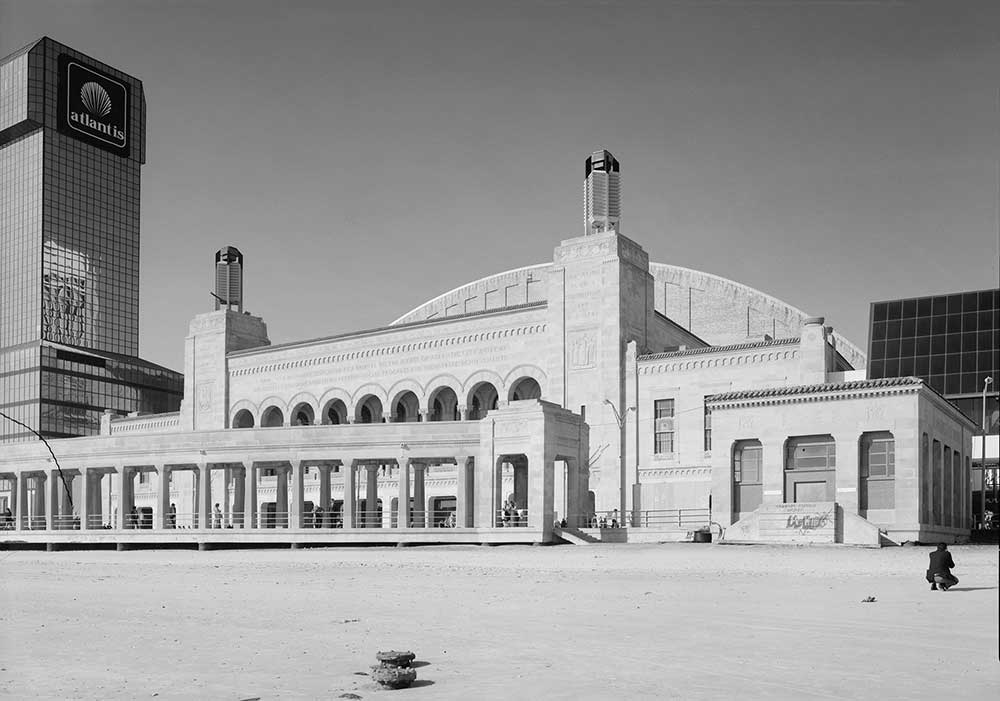
1968 Miss America Protest
‘Miss America’ was (and still is) a pageant competition for American women. The competition first ran in the early 1920s as a ‘bathing beauty’ competition, and by 1968 had evolved into a talent competition – although contestants were still judged on their physical appearance, including during a swimsuit round.
In 1968, a group of radical feminists called New York Radical Women, which included Carol Hanisch and Robin Morgan, began to plan a protest against the next annual event, which was due to take place at Atlantic City, New Jersey. The event was chosen as the setting for a demonstration due to the fact that it was, at the time, a cultural behemoth on a par with many modern-day talent competitions. Every woman involved with the protest had some personal memory of watching the pageant on television, where its superficial beauty ideals went unquestioned by most viewers.
The organisers released a manifesto of sorts called ‘No More Miss America!’ ahead of the protest. It included attacks on what they termed “The Degrading Mindless-Boob-Girlie Symbol,” comparisons of the pageant to livestock shows and cattle markets, and criticism of the racist beauty standards as well as the fact that winners of Miss America would go out to improve the morale of troops in Vietnam “to pep-talk our husbands, fathers, sons and boyfriends into dying and killing with a better spirit.”[1] In their press release, they also stated that they would only grant interviews and quotations to female reporters, which they stuck to. This had the additional impact of elevating female journalists’ work, as the event generated a huge amount of publicity.
On the day of the protest, approximately 200 women travelled to New Jersey for the event. The demonstration took place on the boardwalk outside the venue. The group made use of a tactic known as guerilla theatre – dramatic, high-energy performances used to draw attention and engagement. A large cardboard cut-out Miss America puppet, created by Peggy Dobbins, was auctioned off in the style of a cattle market. The protestors rented a ewe from a nearby farm, and crowned her Miss America in a satirical ceremony.
The most enduringly famous action of the protest was the Freedom Trash Can. ‘Instruments of female torture’ such as bras, girdles, make-up and even copies of Good Housekeeping were all thrown into a rubbish bin. From this arose the myth of bra-burning, which organisers have repeatedly stated never happened – it was illegal to set anything on fire on the wooden boardwalks. There is a possibility that the bin was set alight briefly and quickly extinguished. The confusion may have arisen as a result of an article in the New York Post by Lindsy Van Gelder, who compared the planned protest to the burning of draft cards during anti-Vietnam War protests (this article was published before the demonstration). Nevertheless, the derisive myth of the bra-burning feminists persisted. Later, Carol Hanisch would say “Had [the media] called us girdle-burners, every woman in America would have come and joined us.”[2]
However, the protest was not confined to outside the venue. Thanks to a contact who worked at a bridal magazine, a small group of protestors was able to obtain tickets and get inside the event. Having successfully infiltrated the main hall, they unfurled a banner which read ‘Women’s Liberation’ and managed to shout ‘Women’s liberation!’, ‘No more Miss America!’, and ‘Freedom for women!’ during the final, televised speech.
Multiple women were arrested, including Dobbins, who was charged with ‘emitting a noxious substance’ for spraying Toni Home Permanent in the concert hall.[3] Toni Home Permanent – a notoriously foul-smelling home perm kit – sponsored the event, which the protestors saw as a way for the company to sell women the tools of their own oppression.
The cameras avoided their actions, and the disruption was brief, but the protest as a whole catapulted the women’s liberation movement into the mainstream. New York Radical Women had approximately 30 attendees before No More Miss America; in the weeks after, it had upwards of 150. While much of the coverage at the time was derisive and patronising, it nevertheless encouraged many women to get involved with women’s liberation groups and set up their own. The protest began national and international conversations about dress codes, women’s rights, beauty standards and autonomy that would continue for decades, and still take place today.
[1] http://www.redstockings.org/index.php?option=com_content&view=article&id=65&Itemid=103
[2] http://carolhanisch.org/CHwritings/MissACritique.html
[3] https://www.dissentmagazine.org/online_articles/no-more-miss-america-1968-pageant-protest-oral-history-women-liberation